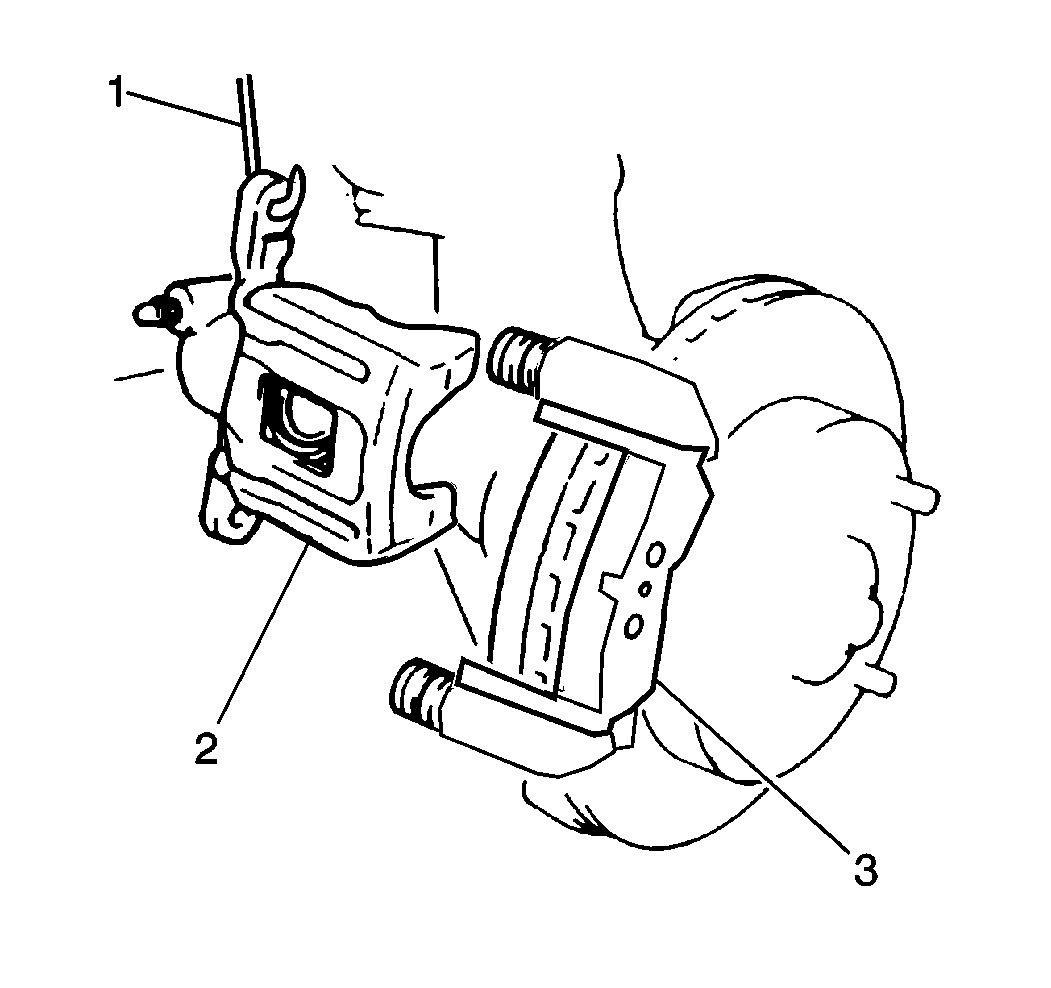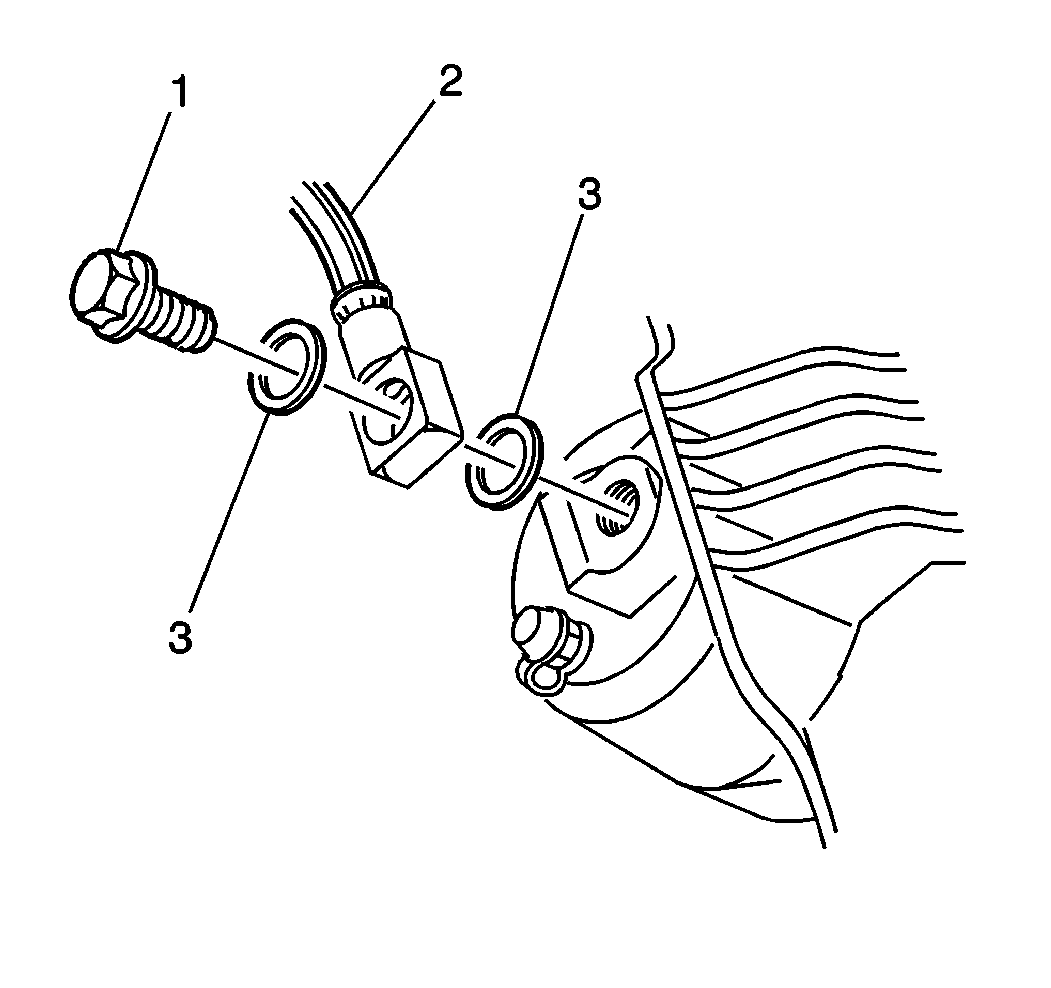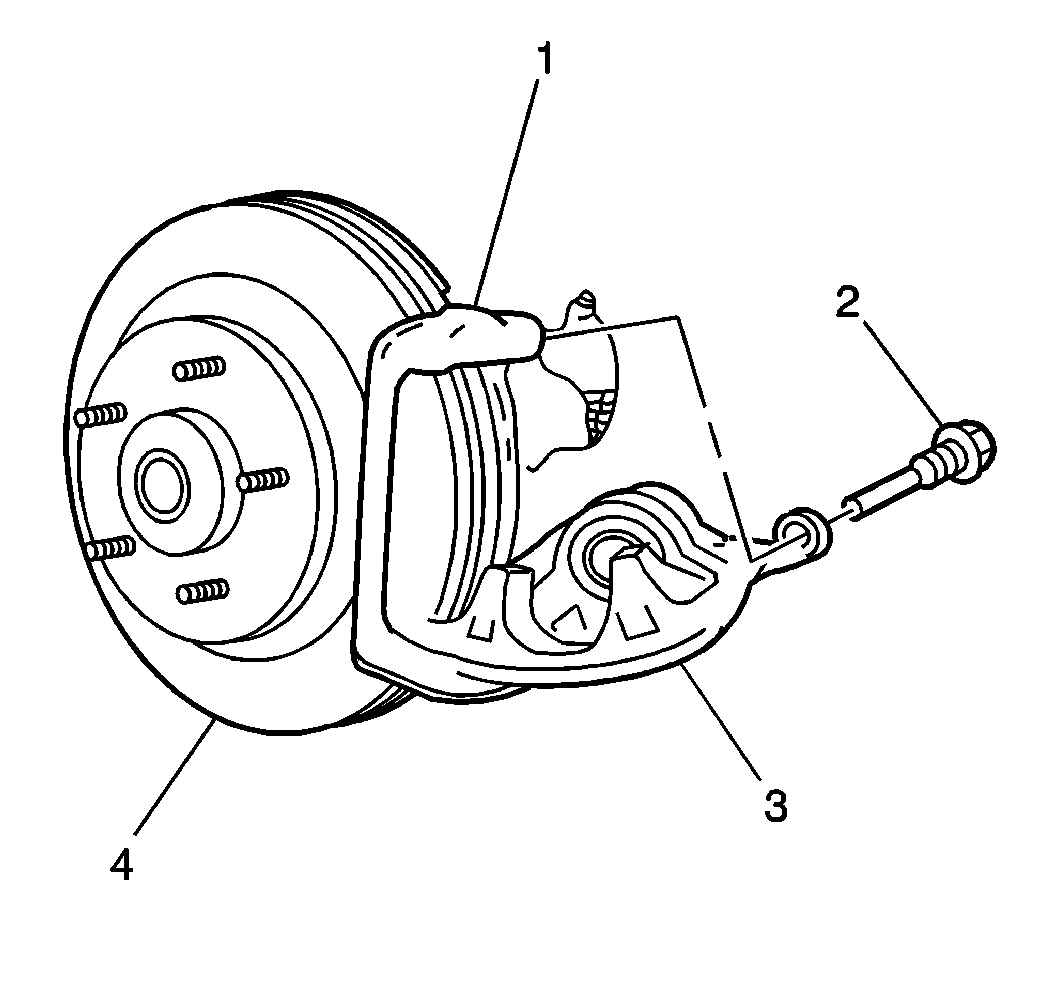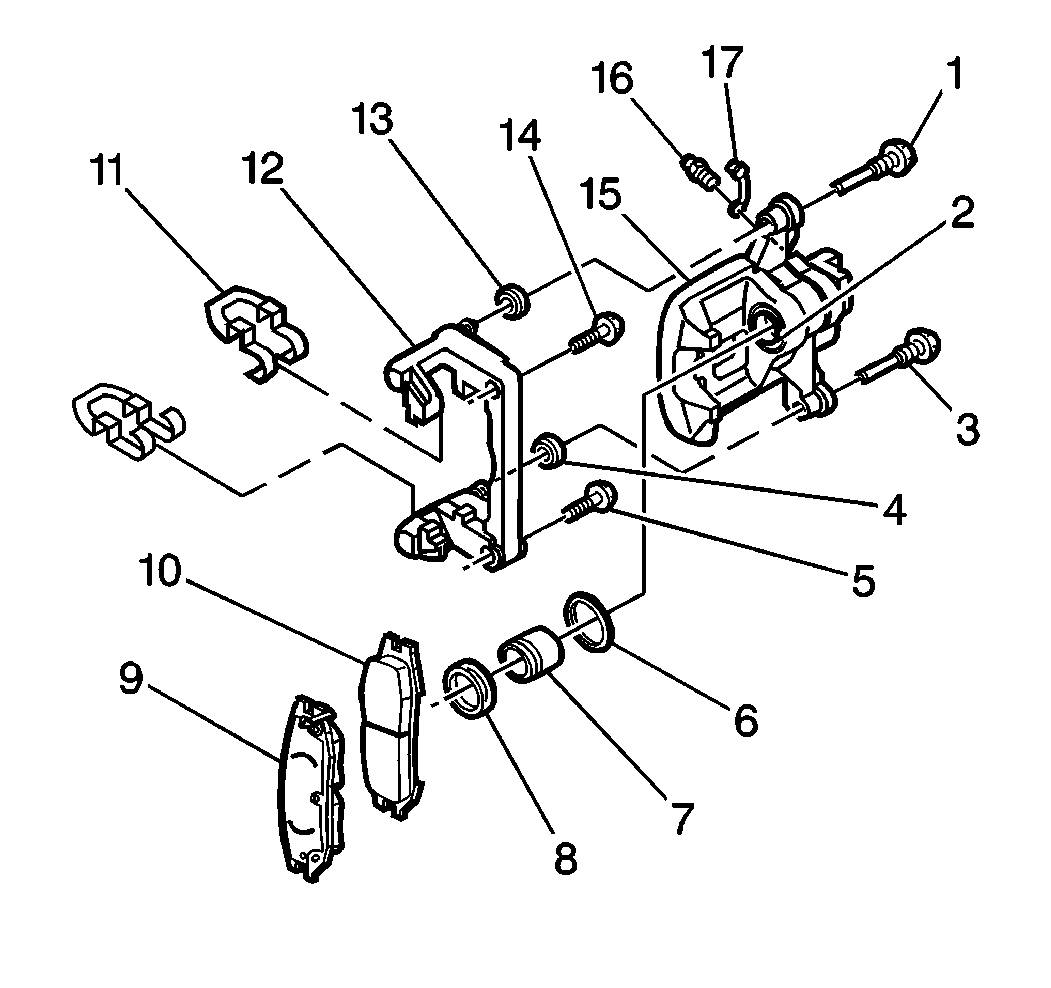Removal Procedure
- Inspect the fluid level in the brake master cylinder reservoir.
- If the brake fluid level is midway between the maximum-full point and the minimum allowable level, then no brake fluid needs to be removed from the reservoir before proceeding. If the brake fluid level is higher than midway between the maximum-full point and the minimum allowable level, then remove brake fluid to the midway point before proceeding.
- Raise and suitably support the vehicle. Refer to Lifting and Jacking the Vehicle in General Information.
- Remove the rear tire and the wheel assembly. Refer to Tire and Wheel Removal and Installation in Tires and Wheels.
- Hand tighten two wheel lug nuts to retain the rotor to the hub.
- Install a large C-clamp over the top of the brake caliper (2) and against the back of the outboard brake pad.
- Tighten the C-clamp until the caliper piston is pushed into the caliper bore enough to slide the caliper off the rotor.
- Remove the C-clamp from the caliper.
- Remove the brake hose-to-caliper bolt (1) from the caliper.
- Plug the opening in the rear brake hose (2) to prevent excessive brake fluid loss and contamination.
- Remove the caliper bolts (1 and 3).
- Remove the caliper (3) from the rotor (4) and the caliper bracket (1).
- Inspect the caliper bracket bolt boots on the caliper bracket for the following conditions:
- Inspect the caliper bolts (2) for corrosion or damage. If corrosion is found, use new caliper bolts, including bushings, when installing caliper.


Discard the 2 copper brake hose gaskets (3). These gaskets may be stuck to the brake caliper and/or the brake hose end.

| • | Cuts |
| • | Tears |
| • | Deterioration |
| • | Replace any damaged caliper bracket bolt boots. Refer to Rear Disc Brake Hardware Replacement . |
Installation Procedure
- Install the caliper (3) over the rotor (4) and the caliper bracket (1). Ensure that the bushings are in place.
- Lubricate the caliper bolts (1 and 3). Use silicone grease. Do not lubricate the threads.
- Lubricate the 2 bolt boots (13 and 4) in the caliper bracket (12). Use silicone grease.
- Install the caliper bolts (1 and 3). Ensure that the bolt boots fit securely in the groove of the caliper bolts. Be sure not to pinch or tear the boots. If the boots are damaged, they must be replaced.
- Assemble the brake hose bolt (1) and the NEW copper brake hose gaskets (3) to the brake hose (2).
- Install the brake hose-to-caliper bolt to the brake caliper.
- Remove the 2 wheel lug nuts retaining the rotor to the hub.
- Install the rear tire and the wheel assembly. Refer to Tire and Wheel Removal and Installation in Tires and Wheels.
- Lower the vehicle.
- Fill the master cylinder to the proper level with clean brake fluid. Refer to Master Cylinder Reservoir Filling in Hydraulic Brakes.
- Bleed the brake system. Refer to Hydraulic Brake System Bleeding in Hydraulic Brakes.
- Inspect the hydraulic brake system for brake fluid leaks.


Notice: Use the correct fastener in the correct location. Replacement fasteners must be the correct part number for that application. Fasteners requiring replacement or fasteners requiring the use of thread locking compound or sealant are identified in the service procedure. Do not use paints, lubricants, or corrosion inhibitors on fasteners or fastener joint surfaces unless specified. These coatings affect fastener torque and joint clamping force and may damage the fastener. Use the correct tightening sequence and specifications when installing fasteners in order to avoid damage to parts and systems.
Tighten
Tighten the bolts to 44 N·m (32 lb ft).

Important: Install NEW copper gaskets.
Tighten
Tighten the bolt to 54 N·m(40 lb ft).
